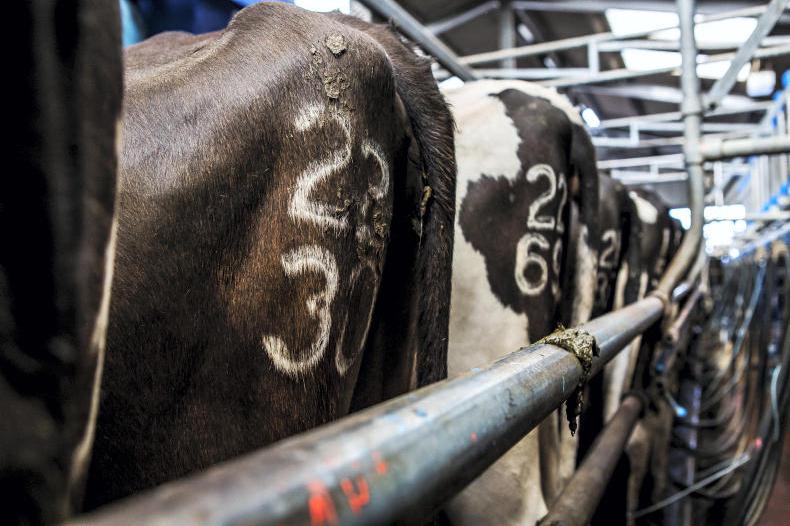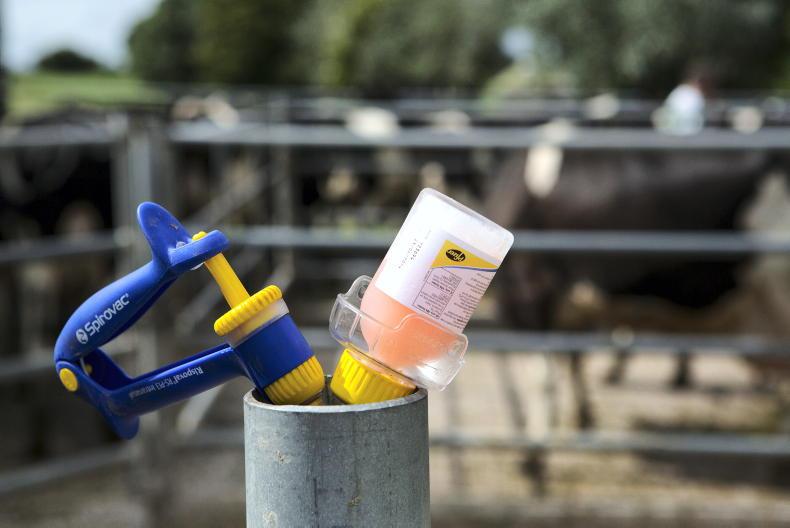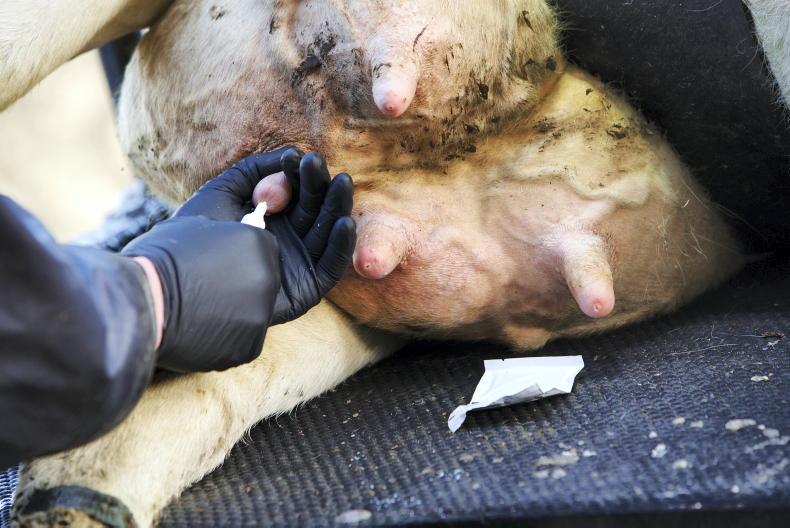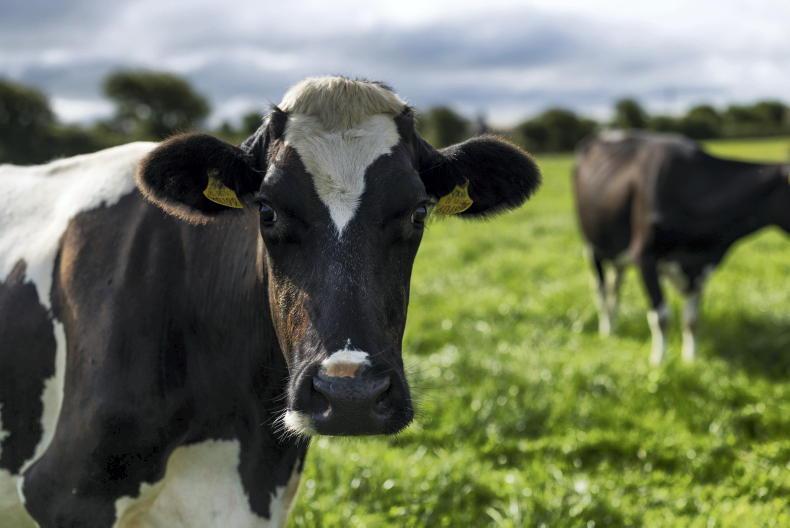Johne’s Disease cannot be eradicated at a national or regional level, although it can be controlled within individual farms, a leading NI vet has said.
“Wherever there are cattle, there is Johne’s Disease. We have it in spadefuls [in NI] and so do lots of other parts of the world,” said Dr Sam Strain from Animal Health and Welfare NI.
“Given our current tools, this disease cannot be eradicated within a country, but it is feasible to do it at a farm level,” he said during a recent online event.
Infectious
Johne’s is an infectious bacterial disease which affects the gut and stops nutrients from being properly absorbed. It usually takes years for clinical signs to appear after an animal first becomes infected.
Strain said that most farmers associate Johne’s with older animals that have lost body condition and have chronic diarrhoea.
“I suggest you should park those thoughts because, in dairy herds in particular, cows are hardly ever kept long enough to reach the end stage of the disease.
“Long before a Johne’s-infected cow will start wasting away and scouring, she will have other production losses which farmers routinely cull for anyway,” he said.
Examples of these production losses include depressed milk yields, fertility problems, and high somatic cell counts. Johne’s therefore leads to higher cull rates within herds, even if the presence of the disease is not known.
“Put simply, Johne’s-positive cows do not stay around as long as non-infected cows. If you are a dairy farmer with Johne’s, often the disease is hidden,” Strain said.
Most common route
He explained that the most common route for Johne’s to be introduced into a herd is through bought-in livestock. When it’s established, the disease can spread to calves in the womb and through milk.
However, Strain said faeces was “by far the most important route” for the disease to be transmitted. He advised farmers to think carefully about how young calves are exposed to dung from different cows.
For example, calving boxes are often a high-risk area which should be kept clean and newborn calves should be removed from pens quickly.
Test for Johne’s
disease to find
high-risk cows
Tests for Johne’s disease should be used as a management tool to identify high-risk animals that could be spreading infection within a herd, Dr Sam Strain has advised.
Strain acknowledged that there are issues with the accuracy of Johne’s tests, so results should not be interpreted as a black and white diagnosis.
“Always remember, a negative result does not mean a cow is not infected. Although if she is infected, she is probably at an earlier stage and she may not be as infectious as the positive animals,” he said.
The Johne’s test can also be influenced by the bovine TB skin test, although Strain suggested there may be “pros and cons” with this interaction.
“We know the test interacts with the TB test. It is controversial but it is likely that the TB test reduces the specificity of the test, so we get more false positives. Although it could also increase the sensitivity of the test, so you probably detect more infected animals after a TB test,” he said.
Results
Dr James Hanks from the University of Reading has developed a colour-coded system to help dairy farmers understand Johne’s test results from regular milk recording.
In general, a test value over 30 is seen as a positive result and under 30 is negative. However, scores for individual cows can vary between tests, which can make results difficult to interpret.
“It is much better to think about high and low rather than positive and negative. We should be more interested in looking at the trends in those numbers,” Hanks said.
“A cow with a score of 30 or 35 probably has the disease, but is under control. A cow with readings over 100 is likely to be spewing out a lot more of the disease and infecting the environment,” he explained.
Priority culls
Cows that Hanks deems as a “priority cull” have either a single Johne’s test score over 100 or consistently return results between 60 and 100.
He acknowledged that results from other cows can be less clear cut. For example, he described “progressor cows” as animals that initially give low scores but gradually return higher results after each test.
Cows that have occasional high results were described as “high shedders in remission” as they are probably infected with Johne’s and are unlikely to be returning the odd false positive result.
Hanks also recommends looking closely at Johne’s test results from first-lactation cows, as it can be an indicator that the infection is still spreading among youngstock.
He concluded by comparing a Johne’s outbreak to an overflowing sink, suggesting if the only step you take is to cull positive cows, then you are just trying to make the plug hole bigger. “You have got to turn the tap off as well,” he said.
Johne’s Disease cannot be eradicated at a national or regional level, although it can be controlled within individual farms, a leading NI vet has said.
“Wherever there are cattle, there is Johne’s Disease. We have it in spadefuls [in NI] and so do lots of other parts of the world,” said Dr Sam Strain from Animal Health and Welfare NI.
“Given our current tools, this disease cannot be eradicated within a country, but it is feasible to do it at a farm level,” he said during a recent online event.
Infectious
Johne’s is an infectious bacterial disease which affects the gut and stops nutrients from being properly absorbed. It usually takes years for clinical signs to appear after an animal first becomes infected.
Strain said that most farmers associate Johne’s with older animals that have lost body condition and have chronic diarrhoea.
“I suggest you should park those thoughts because, in dairy herds in particular, cows are hardly ever kept long enough to reach the end stage of the disease.
“Long before a Johne’s-infected cow will start wasting away and scouring, she will have other production losses which farmers routinely cull for anyway,” he said.
Examples of these production losses include depressed milk yields, fertility problems, and high somatic cell counts. Johne’s therefore leads to higher cull rates within herds, even if the presence of the disease is not known.
“Put simply, Johne’s-positive cows do not stay around as long as non-infected cows. If you are a dairy farmer with Johne’s, often the disease is hidden,” Strain said.
Most common route
He explained that the most common route for Johne’s to be introduced into a herd is through bought-in livestock. When it’s established, the disease can spread to calves in the womb and through milk.
However, Strain said faeces was “by far the most important route” for the disease to be transmitted. He advised farmers to think carefully about how young calves are exposed to dung from different cows.
For example, calving boxes are often a high-risk area which should be kept clean and newborn calves should be removed from pens quickly.
Test for Johne’s
disease to find
high-risk cows
Tests for Johne’s disease should be used as a management tool to identify high-risk animals that could be spreading infection within a herd, Dr Sam Strain has advised.
Strain acknowledged that there are issues with the accuracy of Johne’s tests, so results should not be interpreted as a black and white diagnosis.
“Always remember, a negative result does not mean a cow is not infected. Although if she is infected, she is probably at an earlier stage and she may not be as infectious as the positive animals,” he said.
The Johne’s test can also be influenced by the bovine TB skin test, although Strain suggested there may be “pros and cons” with this interaction.
“We know the test interacts with the TB test. It is controversial but it is likely that the TB test reduces the specificity of the test, so we get more false positives. Although it could also increase the sensitivity of the test, so you probably detect more infected animals after a TB test,” he said.
Results
Dr James Hanks from the University of Reading has developed a colour-coded system to help dairy farmers understand Johne’s test results from regular milk recording.
In general, a test value over 30 is seen as a positive result and under 30 is negative. However, scores for individual cows can vary between tests, which can make results difficult to interpret.
“It is much better to think about high and low rather than positive and negative. We should be more interested in looking at the trends in those numbers,” Hanks said.
“A cow with a score of 30 or 35 probably has the disease, but is under control. A cow with readings over 100 is likely to be spewing out a lot more of the disease and infecting the environment,” he explained.
Priority culls
Cows that Hanks deems as a “priority cull” have either a single Johne’s test score over 100 or consistently return results between 60 and 100.
He acknowledged that results from other cows can be less clear cut. For example, he described “progressor cows” as animals that initially give low scores but gradually return higher results after each test.
Cows that have occasional high results were described as “high shedders in remission” as they are probably infected with Johne’s and are unlikely to be returning the odd false positive result.
Hanks also recommends looking closely at Johne’s test results from first-lactation cows, as it can be an indicator that the infection is still spreading among youngstock.
He concluded by comparing a Johne’s outbreak to an overflowing sink, suggesting if the only step you take is to cull positive cows, then you are just trying to make the plug hole bigger. “You have got to turn the tap off as well,” he said.









SHARING OPTIONS